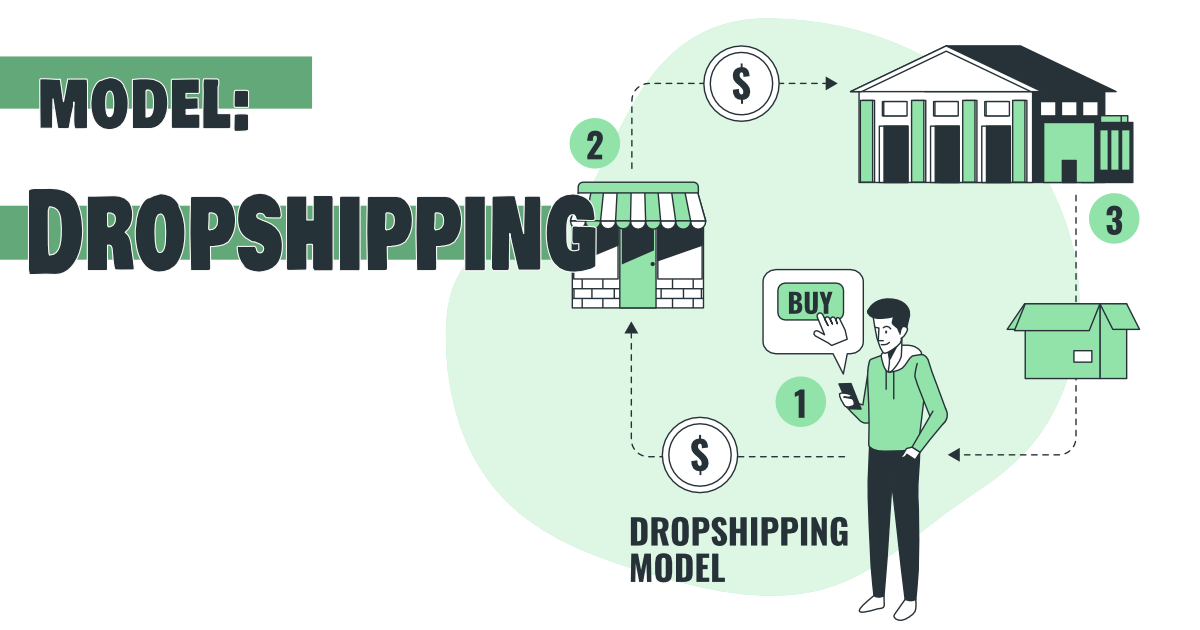Managing cash flow and budgeting are essential tasks for any entrepreneur. They play a crucial role in determining the financial health of a business and can make the difference between success and failure. A well-managed cash flow ensures that a business has enough money to meet its obligations, while a solid budget helps the entrepreneur to plan and allocate resources effectively. In this section, we will discuss strategies and best practices for managing cash flow and budgeting, helping entrepreneurs to make the most of their financial resources.
Forecasting cash flow
Forecasting cash flow is an important aspect of financial management for entrepreneurs. It involves projecting future cash inflows and outflows, and determining when and how much money a business will need to meet its financial obligations. By understanding their cash flow, entrepreneurs can make informed decisions about how to allocate their resources, reduce costs and increase revenue. In this article, we will discuss the importance of cash flow forecasting, provide some examples and best practices to help entrepreneurs forecast their cash flow effectively.
Understanding Cash Flow Forecasting
Cash flow forecasting is the process of estimating the amount of cash that a business will have available in the future. It is a prediction of how much money will come into the business (cash inflows) and how much will go out (cash outflows) over a certain period. This helps entrepreneurs to identify potential cash flow shortages, which can cause problems if not addressed early. It also helps them to plan for the future, including when to invest in new equipment or hire new employees.
Examples of Cash Flow Forecasting
- A retail store owner forecasts their cash flow for the next quarter by estimating sales and expenses for that period. They use this information to plan for inventory, staffing, and marketing expenses.
- A service-based business owner forecasts their cash flow for the next six months by estimating when they will receive payments from clients and when they will have to pay their bills. This helps them to plan for when they will need to have cash available to pay their bills on time.
Best Practices for Cash Flow Forecasting
- Review and update your cash flow forecast regularly. It should be done at least once a month, but it’s even better to do it weekly.
- Make sure your forecast is realistic. Use actual financial data and adjust your forecast as needed.
- Be aware of the impact of seasonal fluctuations. Some businesses may have a higher cash flow during certain times of the year, such as holiday shopping seasons.
- Communicate your forecast with your team. This helps them to understand the financial health of the business and make decisions accordingly.
- Use cash flow forecasting software to automate the process and improve accuracy.
In conclusion, forecasting cash flow is a critical task for entrepreneurs, as it helps them to understand their financial situation and plan for the future. By understanding their cash flow, entrepreneurs can make informed decisions about how to allocate their resources, reduce costs and increase revenue. By following the examples and best practices provided above, entrepreneurs can improve their cash flow forecasting and take control of their financial future.
Managing accounts payable and receivable
Managing accounts payable and receivable is an important aspect of financial management for entrepreneurs. Accounts payable refers to the money a business owes to its suppliers and vendors, while accounts receivable refers to the money that customers owe to the business. Effective management of these accounts can help entrepreneurs to improve their cash flow, reduce costs and increase revenue. In this article, we will discuss strategies and best practices for managing accounts payable and receivable, helping entrepreneurs to make the most of their financial resources.
Understanding Accounts Payable and Receivable
Accounts payable and receivable are two important aspects of a business’s financial health. Accounts payable represents the money that a business owes to its suppliers and vendors, while accounts receivable represents the money that customers owe to the business. By keeping track of these accounts, entrepreneurs can better understand their financial situation and make informed decisions about how to allocate their resources.
Examples of Managing Accounts Payable and Receivable
- A retail store owner manages their accounts payable by setting up a system to pay their bills on time. This helps them to maintain good relationships with their suppliers and vendors, and avoid late payment fees.
- A service-based business owner manages their accounts receivable by setting up an invoicing system and following up with customers who have not paid their bills. This helps them to improve their cash flow and ensure that they get paid on time.
Best Practices for Managing Accounts Payable and Receivable
- Review and update your accounts payable and receivable regularly. It should be done at least once a month, but it’s even better to do it weekly.
- Set up a system for paying bills on time. This can include setting up automated payments or reminders to pay bills.
- Communicate with your suppliers and vendors. Let them know when you will be able to pay your bills and ask if they can offer any discounts for early payment.
- Follow up with customers who have not paid their bills. Send reminders and call them to ensure that they pay on time.
- Use accounting software to automate the process and improve accuracy.
In conclusion, managing accounts payable and receivable is an important task for entrepreneurs, as it helps them to understand their financial situation and make informed decisions about how to allocate their resources. By following the strategies and best practices provided above, entrepreneurs can improve their management of these accounts and take control of their financial future.
Budgeting for expenses and revenues
Budgeting for expenses and revenues is an essential aspect of financial management for entrepreneurs. It involves creating a plan for how a business will spend and earn money, and determining how much money will be needed to meet its financial obligations. By creating a budget, entrepreneurs can make informed decisions about how to allocate their resources, reduce costs and increase revenue. In this article, we will discuss the importance of budgeting, provide some examples and best practices to help entrepreneurs budget effectively.
Understanding Budgeting
Budgeting is the process of creating a plan for how a business will spend and earn money. It involves estimating future expenses and revenues, and determining how much money will be needed to meet the business’s financial obligations. A budget is a tool that helps entrepreneurs to understand their financial situation and make informed decisions about how to allocate their resources.
Examples of Budgeting
- A retail store owner creates a budget for the next quarter by estimating their sales and expenses for that period. They use this information to plan for inventory, staffing, and marketing expenses.
- A service-based business owner creates a budget for the next year by estimating their expected revenues and expenses. This helps them to plan for when they will need to have cash available to pay their bills on time.
Best Practices for Budgeting
- Review and update your budget regularly. It should be done at least once a quarter, but it’s even better to do it monthly.
- Make sure your budget is realistic. Use actual financial data and adjust your budget as needed.
- Be aware of the impact of seasonal fluctuations. Some businesses may have higher expenses or revenues during certain times of the year.
- Communicate your budget with your team. This helps them to understand the financial goals of the business and make decisions accordingly.
- Use budgeting software to automate the process and improve accuracy.
In conclusion, budgeting for expenses and revenues is a critical task for entrepreneurs, as it helps them to understand their financial situation and plan for the future. By creating a budget, entrepreneurs can make informed decisions about how to allocate their resources, reduce costs and increase revenue. By following the examples and best practices provided above, entrepreneurs can improve their budgeting and take control of their financial future.
Identifying and managing cash flow gaps
Cash flow gaps refer to the difference between the amount of cash a business has on hand and the amount it needs to meet its financial obligations. These gaps can be caused by a variety of factors, such as delayed payments from customers or unexpected expenses. For entrepreneurs, managing cash flow gaps is an essential aspect of financial management, as it ensures that the business has enough cash on hand to meet its financial obligations and avoid financial difficulties. In this article, we will discuss strategies and best practices for identifying and managing cash flow gaps, helping entrepreneurs to keep their business financially stable.
Understanding Cash Flow Gaps
Cash flow gaps occur when a business does not have enough cash on hand to meet its financial obligations. These gaps can be caused by a variety of factors, such as delayed payments from customers, unexpected expenses, or a lack of cash flow forecasting. For entrepreneurs, managing cash flow gaps is an essential aspect of financial management, as it ensures that the business has enough cash on hand to meet its financial obligations and avoid financial difficulties.
Examples of Identifying and Managing Cash Flow Gaps
- A retail store owner identifies a cash flow gap by reviewing their accounts payable and receivable. They realize that their customers are taking longer to pay their bills, and they need to find a way to bridge the gap. The store owner could reach out to their suppliers and negotiate payment terms or apply for a short-term loan to bridge the gap.
- A service-based business owner identifies a cash flow gap by reviewing their budget for the next quarter. They realize that their expenses are higher than expected, and they need to find a way to bridge the gap. The business owner could reach out to their clients and negotiate payment terms or increase their prices to generate more revenue.
Best Practices for Identifying and Managing Cash Flow Gaps
- Review and update your cash flow regularly. It should be done at least once a month, but it’s even better to do it weekly.
- Communicate with your customers, suppliers, and vendors. Let them know when you will be able to pay your bills and ask if they can offer any discounts for early payment.
- Use financial forecasting tools to identify potential cash flow gaps.
- Have a contingency plan in place in case of unexpected events that can cause a cash flow gap.
- Consider alternative funding options such as short-term loans or crowdfunding to bridge cash flow gaps
In conclusion, managing cash flow gaps is an essential aspect of financial management for entrepreneurs. By identifying and managing cash flow gaps, entrepreneurs can ensure that their business has enough cash on hand to meet its financial obligations and avoid financial difficulties. By following the strategies and best practices provided above, entrepreneurs can improve their management of cash flow gaps and take control of their financial future.
Implementing cost-saving measures
Implementing cost-saving measures is an essential aspect of financial management for entrepreneurs. By reducing costs, entrepreneurs can increase their profits and improve their financial stability. Cost-saving measures can be implemented in a variety of areas, including expenses on goods and services, employee expenses, and operational expenses. In this article, we will discuss strategies and best practices for implementing cost-saving measures, helping entrepreneurs to increase their profits and improve their financial stability.
Understanding Cost-Saving Measures
Cost-saving measures refer to the actions that a business takes to reduce its expenses and increase its profits. These measures can be implemented in a variety of areas, including expenses on goods and services, employee expenses, and operational expenses. Implementing cost-saving measures is an essential aspect of financial management for entrepreneurs, as it helps them to increase their profits and improve their financial stability.
Examples of Implementing Cost-Saving Measures
- A retail store owner reduces their costs by negotiating better prices with suppliers. By negotiating with suppliers, the store owner is able to purchase goods at a lower cost, which allows them to increase their profit margins.
- A service-based business owner reduces their costs by outsourcing certain tasks to freelancers. This allows the business owner to reduce their employee expenses, which increases their profits.
Best Practices for Implementing Cost-Saving Measures
- Regularly review expenses and identify areas where cost-saving measures can be implemented.
- Use technology and automation to reduce operational costs.
- Outsource non-core tasks to freelancers or other businesses.
- Negotiate better prices with suppliers and vendors.
- Invest in energy-efficient equipment and technology.
- Implement a telecommuting policy to reduce office expenses
- Reduce unnecessary travel expenses by conducting meetings online
In conclusion, implementing cost-saving measures is an essential aspect of financial management for entrepreneurs. By reducing costs, entrepreneurs can increase their profits and improve their financial stability. By following the strategies and best practices provided above, entrepreneurs can improve their cost-saving measures and take control of their financial future. By regularly reviewing expenses and identifying areas where cost-saving measures can be implemented, entrepreneurs can make informed decisions about how to allocate their resources and improve their financial stability.
Managing financial statements and reports
Managing financial statements and reports is an essential aspect of financial management for entrepreneurs. Financial statements and reports provide a detailed picture of a business’s financial performance and are used to make important decisions about the business. By managing financial statements and reports, entrepreneurs can better understand their financial position and make informed decisions about the future of their business. In this article, we will discuss strategies and best practices for managing financial statements and reports, helping entrepreneurs to improve their financial management and make better business decisions.
Understanding Financial Statements and Reports
Financial statements and reports are formal documents that provide a detailed picture of a business’s financial performance. These documents include the balance sheet, income statement, and cash flow statement. They are used to make important decisions about the business, such as whether to invest in new equipment or expand the business. Financial statements and reports are also used to make important decisions about the future of the business, such as whether to seek funding or apply for a loan.
Examples of Managing Financial Statements and Reports
- A retail store owner reviews their financial statements and reports to identify areas where they can improve their financial performance. They discover that their expenses are higher than expected, so they decide to implement cost-saving measures to reduce their expenses and improve their profits.
- A service-based business owner uses their financial statements and reports to identify trends in their revenue and expenses. They notice that their revenue is increasing while their expenses are decreasing, which indicates that the business is becoming more profitable.
Best Practices for Managing Financial Statements and Reports
- Review financial statements and reports regularly to identify areas where improvements can be made.
- Use financial forecasting tools to predict future financial performance.
- Keep accurate financial records and maintain proper documentation.
- Use financial statements and reports to make important decisions about the future of the business.
- Use financial ratios to analyze financial performance and identify areas for improvement.
- Seek guidance from a professional accountant or financial advisor
- Understand the difference between cash flow and profit and take actions accordingly
In conclusion, managing financial statements and reports is an essential aspect of financial management for entrepreneurs. By managing financial statements and reports, entrepreneurs can better understand their financial position and make informed decisions about the future of their business. By following the strategies and best practices provided above, entrepreneurs can improve their financial management and make better business decisions. By regularly reviewing financial statements and reports, entrepreneurs can identify areas where improvements can be made and take action to improve their financial performance. By using financial forecasting tools, entrepreneurs can predict future financial performance and make informed decisions about the future of the business. By keeping accurate financial records and maintaining proper documentation, entrepreneurs can ensure that their financial statements and reports are accurate and reliable. Overall, managing financial statements and reports is an essential aspect of financial management for entrepreneurs and is key to making informed decisions and improving the financial stability of the business.
Utilizing financial management software and tools
Utilizing financial management software and tools is an essential aspect of financial management for entrepreneurs. Financial management software and tools automate and streamline financial tasks, allowing entrepreneurs to better understand their financial position and make informed decisions about their business. In this article, we will discuss strategies and best practices for utilizing financial management software and tools, helping entrepreneurs to improve their financial management and make better business decisions.
Understanding Financial Management Software and Tools
Financial management software and tools are computer programs that automate and streamline financial tasks, such as budgeting, accounting, and financial forecasting. These tools are designed to help entrepreneurs better understand their financial position and make informed decisions about their business. Financial management software and tools can also be used to automate financial tasks such as invoicing, tracking expenses, and managing accounts payable and receivable.
Examples of Utilizing Financial Management Software and Tools
- A retail store owner uses financial management software to automate their accounting tasks, such as invoicing and tracking expenses. This allows the store owner to focus on other aspects of their business, such as customer service and sales.
- A service-based business owner uses financial management software to create a budget and track their expenses. This allows the business owner to better understand their financial position and make informed decisions about the future of their business.
Best Practices for Utilizing Financial Management Software and Tools
- Use software that is user-friendly and easy to navigate
- Schedule regular reviews of your financial statements and reports
- Use software that is compatible with your existing systems
- Use software that offers secure data encryption
- Use software that provides real-time data and analytics
- Use software that can be accessed from any device, anywhere
- Seek guidance from a professional accountant or financial advisor
- Use financial management software that includes budgeting, forecasting, and planning tools.
In conclusion, utilizing financial management software and tools is an essential aspect of financial management for entrepreneurs. By automating and streamlining financial tasks, entrepreneurs can better understand their financial position and make informed decisions about their business. By following the strategies and best practices provided above, entrepreneurs can choose financial management software and tools that are user-friendly, compatible with their existing systems, secure, provide real-time data and analytics and can be accessed from any device. This allows entrepreneurs to save time and improve their financial management and make better business decisions. Additionally, by seeking guidance from a professional accountant or financial advisor, entrepreneurs can ensure they are using the most appropriate tools for their business. Overall, utilizing financial management software and tools is an essential aspect of financial management for entrepreneurs and is key to making informed decisions and improving the financial stability of the business.













